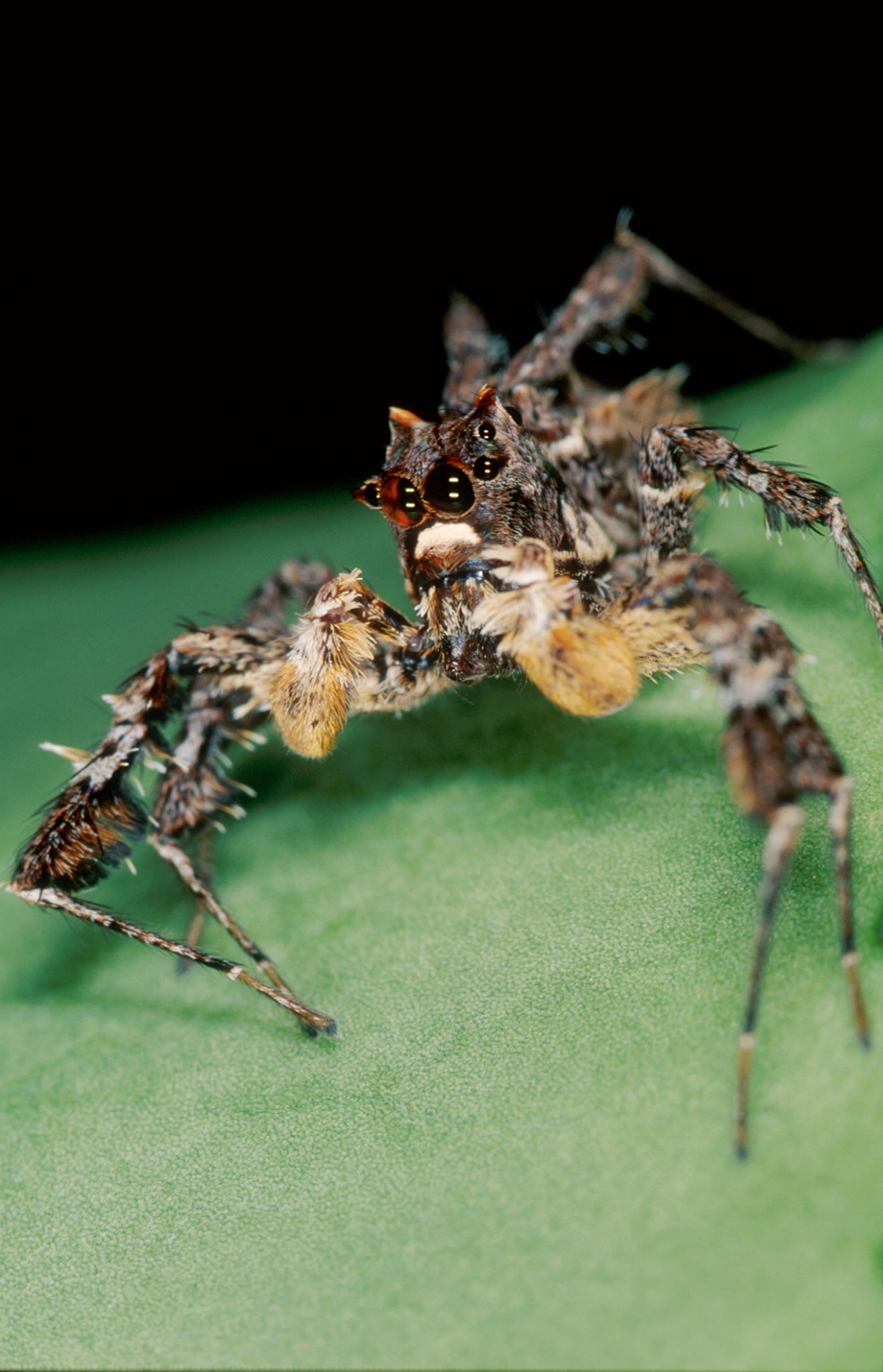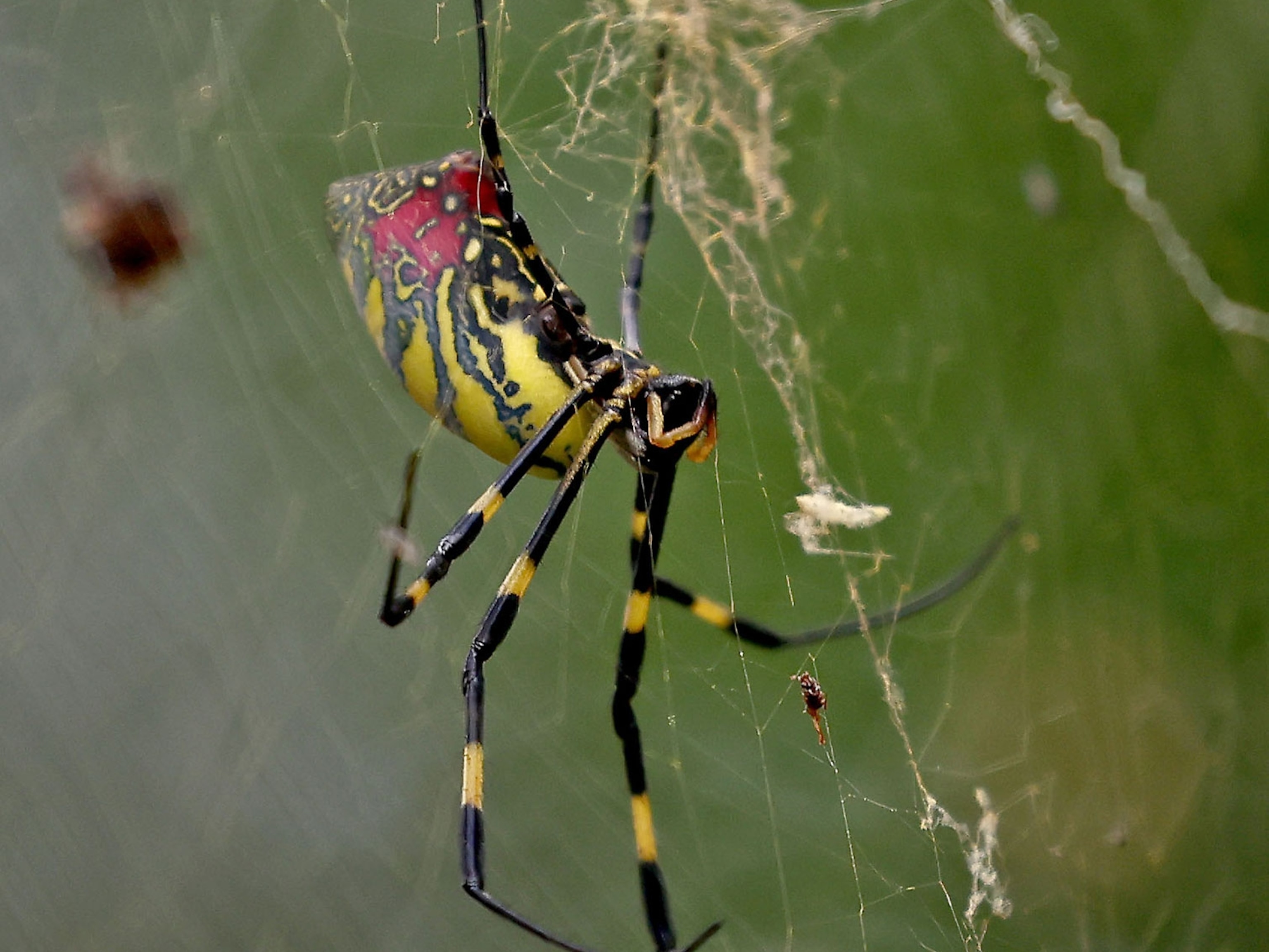
Jumping Spiders Can Think Ahead, Plan Detours
The tiny arachnids possess an abstract working memory—a capability usually seen in larger animals, a new study says.
With brains the size of a sesame seed, jumping spiders may seem like mental lightweights.
But a new study shows that many species plan out intricate detours to reach their prey—smarts usually associated with far bigger creatures.
The arachnids, already well known for their colors and elaborate mating rituals, have sharp vision and an impressive awareness of three-dimensional space. (See "Surprise: Jumping Spiders Can See More Colors Than You Can.")
“Their vision is more on par with vertebrates,” says Damian Elias of the University of California, Berkeley, who wasn’t involved in the new research. “And that allows them to do things that are physically impossible for other animals that size.”
Jumping spiders of the subfamily Spartaeinae (spar-TAY-in-ay) are particularly ambitious—they eat other spiders. Researchers suspect that preying on other predators requires extra intelligence and cunning.
In the 1980s and 1990s, Robert Jackson of New Zealand’s University of Canterbury demonstrated that Portia fimbriata, a member of this spider-snacking subfamily, methodically plans winding detours to sneak up on prey spiders. Portia can even find hidden prey, suggesting that the predator can visualize its prey's location and a path to get there.
But Jackson, who received funding from National Geographic's Committee for Research and Exploration, and his colleague Fiona Cross were sure that Portia wasn’t alone in its forward thinking.
“There’s so much attention given to Portia,” says Cross, “but there are these other [jumping] spiders: why not them?”
Obstacle Course
Demonstrating in the lab that other spider species also planned detours, however, proved challenging: Other spiders ignored the experimental walkways that Portia used.
So Jackson and Cross decided to take advantage of jumping spiders’ dislike of getting wet.

Their new setup consisted of a tower on a platform surrounded by moats. From atop the tower, a famished jumping spider could see two distant boxes: one containing juicy spider fragments, the other containing unappetizing leaves. (Related: "New Spider Species Found, Plays Peekaboo to Attract Mates.")
To reach the box containing the meal, the spider would have to crawl down the tower and onto the platform, which also had two pillars leading to separate suspended walkways—one to the food, one to the leaves.
But once the spider started its descent from the tower, the researchers emptied out the boxes, preventing it from getting visual reminders of the meal’s location.
In their lab at Kenya’s International Centre for Insect Physiology and Ecology, Cross and Jackson placed individuals from 14 different Spartaeinae species in this tortuous obstacle course.
“We have to hide ourselves, so that the spider isn’t distracted,” says Cross. “They’re attracted to blinking.”
It turned out that each species was overwhelmingly successful at finding its way to the box containing food—despite the fact that none of the subjects could see the food mid-detour, according to the study, published Tuesday in the Journal of the Experimental Analysis of Behavior.
What’s more, spiders that chose the wrong path often paused, seemingly confused.
“Their expectations for what they were going to weren’t met,” says Cross. “It wasn’t part of their plan.”
Astounded
The finding hammers home that, like Portia, many related jumping spiders must have an abstract sense of the food’s location and a working plan for how to navigate the walkways.
“A lot of times, when papers are published about a particular organism, broad generalizations are made about the group,” says Berkeley's Elias.
The study authors have "done a really good job of showing [planning] in this very large group.” (Read about other colorful new jumping spiders, Sparklemuffin and Skeletorus.)
Researchers still have a long way to go to understand how spiders think, but for now they're left to wonder what’s going on in those tiny little heads.
"What they do just astounds me,” says Cross.
Follow Michael Greshko on Twitter.





